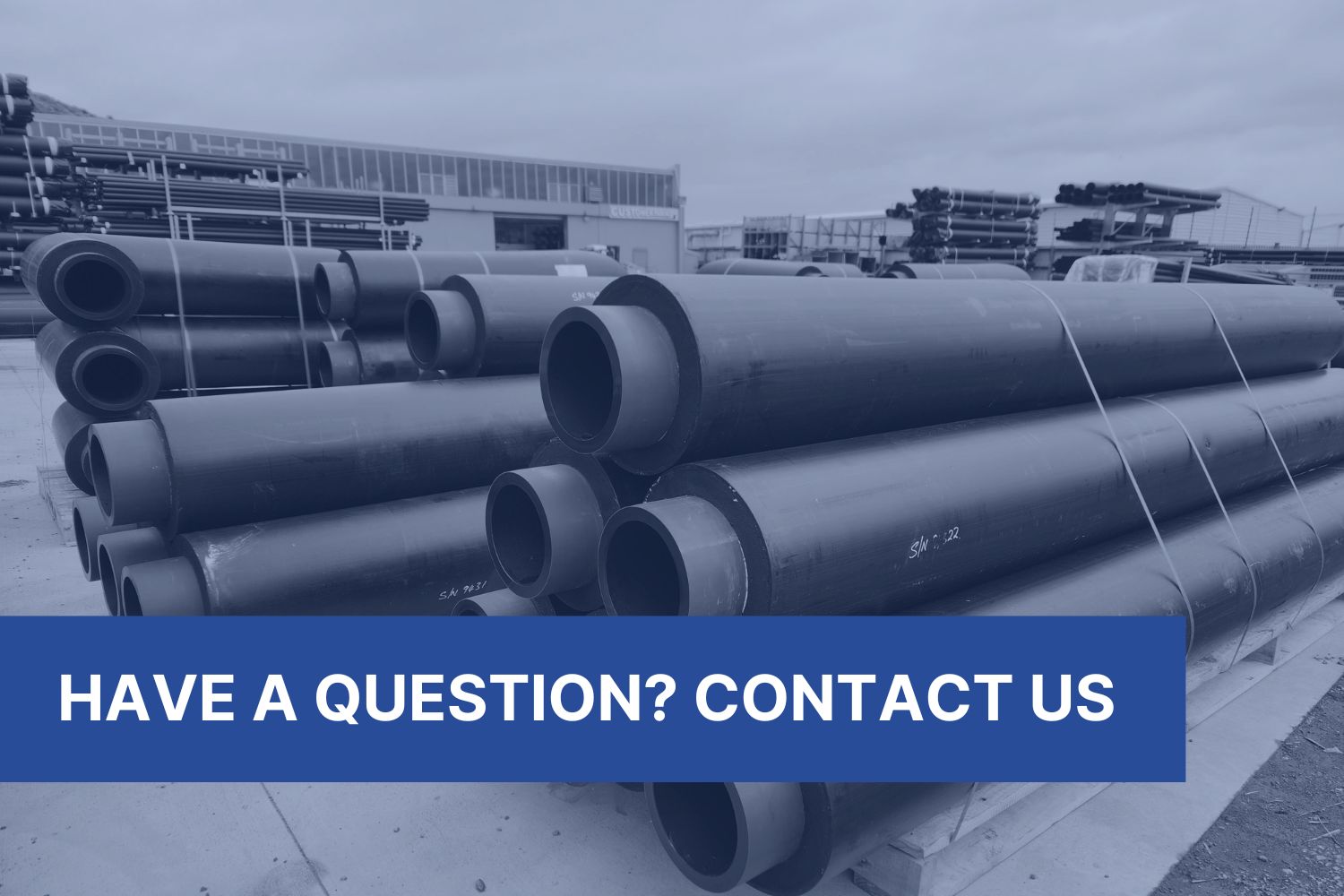Resources
At UPG you receive genuine personal service to meet your unique demands, without compromise.
Resources
Account forms
Account applications can take a few days to process and they are always at the discretion of management.
Some industries and clients we are unable to supply pipes and fittings to directly as we have merchant relationships.
Please feel free to contact our team if you have any questions.
UPG Credit Application Form
Technical downloads
FAQ
Dynatherm PP-RCT
What’s the difference between PP-RCT and PP-R?
The new manufacturing process developed for PP-RCT enhances the crystalline structure which enables pipes produced from the material to operate at higher stresses at elevated temperatures. Boasting a more than 50% improvement in long-term strength designers are now able to use thinner walled pipes and in some instances smaller diameter pipes can be used instead of using PP-R. The market is moving towards PP-RCT due to these benefits and we are likely to see PP-R fazed out of the market over time. For more info view the PP-RCT Material downloads here.
Stream PE100 Pressure
What is HDPE pipe?
HDPE stands for high density polyethylene (many times just referred to as PE), and is made from ethylene, which can be derived from either crude oil or natural gas. PE Pipe is extremely strong, durable, flexible, corrosion free and chemical resistant.
What makes PE unique?
PE pipe is joined together through a unique heat fusion process that creates a strong leak-free system.
What are the advantages of PE pipe for municipal water and sewer use?
Other types of plastic pipes require joints to bend and link the pipe together. These joints tend to lose water as it flows through the pipe. PE pipe is fused together so that the links are equally strong or stronger than the rest of the pipe, meaning that it holds water much better than PVC.
What can PE pipe carry?
PE pipe transports potable water, wastewater, chemicals, and compressed gases.
Why is PE pipe better than metal pipe?
Unlike metal pipe, PE pipe does not corrode over time and is not susceptible to chemical damage. It is also much more flexible and can move with different soil conditions and ground movement. Because it is light weight, it is easier to handle, transport, and fix, which in turn reduces costs.
Why is PE better than PVC (polyvinyl chloride) pipe?
During the manufacture and disposal of PVC plastic pipes, harmful toxins are released into the air. Some countries, including Sweden, have made it illegal to use PVC pipe. In contrast, PE is much less harmful to the environment.
How does leakage from PE compare to PVC and metal pipes?
PE pipe is joined by a heat fusion process that forms strong and leak-free pipe. The “allowable water leakage” rate of PE pipe is zero. PVC and ductile iron installations have “allowable leakage rates” as high as 10 percent.
Are there certain soil requirements for PE pipe?
No. PE pipe is known for its flexibility, toughness and chemical resistance. PE pipe can withstand great pressure changes due to its outstanding ductility and toughness. These performance characteristics make PE pipe an excellent choice for dynamic soils and earthquake prone areas that require a strong, long-lasting and corrosion-resistant pipe that is also flexible enough to be installed and assembled in harsh and challenging environments.
Can PE be installed without digging a trench?
Yes. PE pipe can be installed with pipe bursting, sliplining, or horizontal directional drilling (HDD) techniques, all of which are trenchless. These types of installations significantly reduce the overall costs since highways and other immovable structures do not have to be disrupted.
Pipe bursting
An expanding device called an expander head is sent into the defective pipeline. It travels through the pipeline toward the other end and breaks the pipe into many small pieces, pushing the pieces into the surrounding soil. New pipe is attached to the back of the expander head, replacing the old pipe immediately.
Sliplining
A cable is inserted through the defective pipeline and then attached to the front of the new pipe. The new liner pipe is then pulled into the existing pipe, and the new liner pipe reconnected to the system. The new pipe must be smaller in diameter than the old pipe.
Directional Drilling
This technique is used to install brand new pipe without digging up the ground and is especially effective around roads and bodies of water. It is a three-stage process. Stage one involves drilling a hole along the designated path. Stage two involves passing a device called a “reamer” through the hole to enlarge it. Stage three involves sending the pipe through the hole and connecting it to the system. The entire operation is run from above ground using a control system that guides the drilling.
How does the overall cost of PE compare with other materials?
Underground water pipes are a major long term (50-100 years) investment. In addition to comparing the initial purchase price, the long term maintenance costs and overall life-cycle costs should be carefully evaluated. Because PE pipe does not corrode and does not leak at the joints, constant repair of ageing metal pipes or leaking at the joints with all other pipes is no longer an issue. Initial cost savings are also realized with the opportunity for a trenchless installation. Compared to PVC and ductile iron, PE has the lowest life-cycle costs due to lower installation costs, lower repair rates, less water loss and lower energy costs.
How do the failure rates of PE pipes compare to those of ductile iron and PVC?
In a nine-year span between 1995 and 2003 in Europe, PE pipes averaged around four failures per 100km per year, while ductile iron and PVC averaged around eight and nine failures per 100km per year, respectively.
Why choose PE pipe?
Zero Leaks
PE Pipe is joined by a heat fusion process that forms joints that are leak-free. This design eliminates the potential leak points every 20 feet which can occur with PVC and ductile iron pipe.
Best for the Environment
PE is the safest, most environmentally friendly pipe material. The application of PE pipe for water distribution results in energy efficiency through reduced electric consumption. Using less energy results in a lower carbon footprint, and PE’s jointless fusion technology means it never releases toxins from sewage into the ground or potable water supply.
Best for Consumers
PE pipes outstanding performance means that consumers get the very best, cleanest water around. Other pipes leak, which means more electricity is needed to process and pump additional water into households. With PE pipe, there is no leakage. Therefore, less electricity is needed, which means consumers save on rising utility costs.
Corrosion and Chemical Resistant
PE pipe is nonconductive polymer and does not rust or corrode, assuring long service and effective use of municipal dollars.
Lower Life Cycle Costs
Due to PE’s flexibility and jointless construction, installation costs are lower compared to other types of pipe. In addition, PE does not leak, which reduces repair and maintenance costs simultaneously.
Perfect for Trenchless
PE is the number one choice for trenchless installations which reduce restoration and roadway reconstruction costs, and allows for installation under rivers and lakes with less disruption to the environment.
Lightweight and Flexible
PE is lightweight and does not require the use of heavy lifting equipment for installation. It reduces the need for fittings, is excellent in shifting soils and performs well in earthquake-prone areas. The pipe’s flexibility solves many unique problems that cannot be fixed with rigid concrete, PVC or ductile iron pipe.
Stream HDPE Drainage
What is HDPE pipe?
HDPE stands for high density polyethylene (many times just referred to as PE), and is made from ethylene, which can be derived from either crude oil or natural gas. PE Pipe is extremely strong, durable, flexible, corrosion free and chemical resistant.
What makes PE unique?
PE pipe is joined together through a unique heat fusion process that creates a strong leak-free system.
What are the advantages of PE pipe for municipal water and sewer use?
Other types of plastic pipes require joints to bend and link the pipe together. These joints tend to lose water as it flows through the pipe. PE pipe is fused together so that the links are equally strong or stronger than the rest of the pipe, meaning that it holds water much better than PVC.
Why is PE better than PVC (polyvinyl chloride) pipe?
During the manufacture and disposal of PVC plastic pipes, harmful toxins are released into the air. Some countries, including Sweden, have made it illegal to use PVC pipe. In contrast, PE is much less harmful to the environment.
How does leakage from PE compare to PVC and metal pipes?
PE pipe is joined by a heat fusion process that forms strong and leak-free pipe. The “allowable water leakage” rate of PE pipe is zero. PVC and ductile iron installations have “allowable leakage rates” as high as 10 percent.
Are there certain soil requirements for PE pipe?
No. PE pipe is known for its flexibility, toughness and chemical resistance. PE pipe can withstand great pressure changes due to its outstanding ductility and toughness. These performance characteristics make PE pipe an excellent choice for dynamic soils and earthquake prone areas that require a strong, long-lasting and corrosion-resistant pipe that is also flexible enough to be installed and assembled in harsh and challenging environments.
Why choose PE pipe?
Zero Leaks
PE Pipe is joined by a heat fusion process that forms joints that are leak-free. This design eliminates the potential leak points every 20 feet which can occur with PVC and ductile iron pipe.
Best for the Environment
PE is the safest, most environmentally friendly pipe material. The application of PE pipe for water distribution results in energy efficiency through reduced electric consumption. Using less energy results in a lower carbon footprint, and PE’s jointless fusion technology means it never releases toxins from sewage into the ground or potable water supply.
Best for Consumers
PE pipes outstanding performance means that consumers get the very best, cleanest water around. Other pipes leak, which means more electricity is needed to process and pump additional water into households. With PE pipe, there is no leakage. Therefore, less electricity is needed, which means consumers save on rising utility costs.
Corrosion and Chemical Resistant
PE pipe is nonconductive polymer and does not rust or corrode, assuring long service and effective use of municipal dollars.
Lower Life Cycle Costs
Due to PE’s flexibility and jointless construction, installation costs are lower compared to other types of pipe. In addition, PE does not leak, which reduces repair and maintenance costs simultaneously.
Perfect for Trenchless
PE is the number one choice for trenchless installations which reduce restoration and roadway reconstruction costs, and allows for installation under rivers and lakes with less disruption to the environment.
Lightweight and Flexible
PE is lightweight and does not require the use of heavy lifting equipment for installation. It reduces the need for fittings, is excellent in shifting soils and performs well in earthquake-prone areas. The pipe’s flexibility solves many unique problems that cannot be fixed with rigid concrete, PVC or ductile iron pipe.


